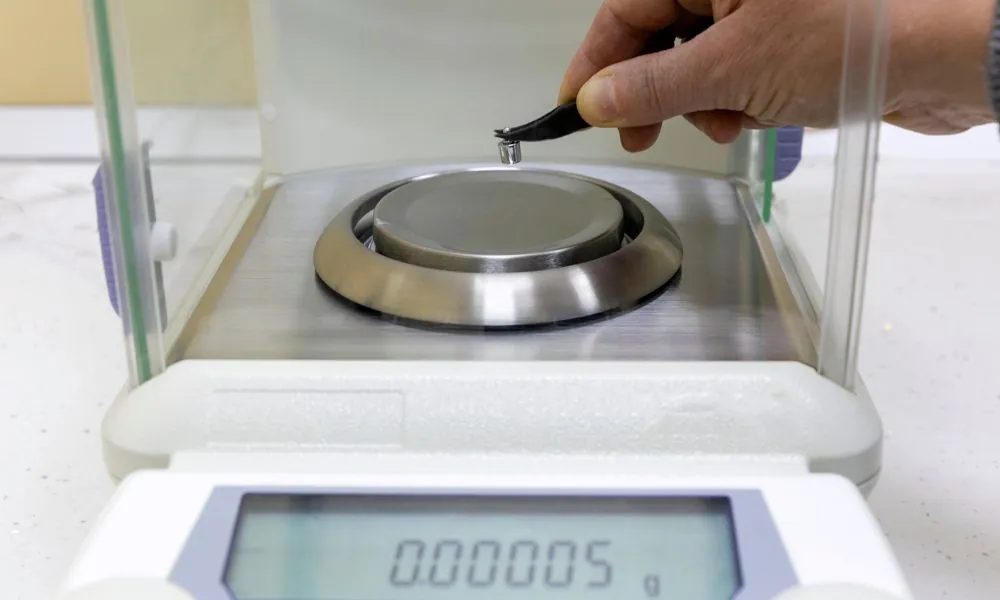In the realm of scientific research, precision and accuracy are paramount. Whether you’re working in a high-tech laboratory or a small research facility, selecting the right analytical balance can significantly impact your results. With numerous models and specifications available, making the right choice might seem daunting. This guide will walk you through the essential factors to consider when choosing an analytical balance for your laboratory needs.
Key Takeaways
- Precision and Sensitivity: Choose based on the level of detail required in your measurements.
- Capacity: Ensure the balance can handle the maximum weight of your samples.
- Readability: Opt for a balance with the smallest measurement increment suitable for your needs.
- Environmental Conditions: Select a balance that can perform accurately in your laboratory’s conditions.
- Calibration and Maintenance: Look for easy calibration options and consider maintenance needs.
- User Interface and Data Handling: Choose a balance with an intuitive interface and necessary data features.
- Compliance and Certification: Verify adherence to industry standards and certifications.
By keeping these key factors in mind, you can choose an analytical balance that will enhance the quality and reliability of your laboratory results.
Understanding Analytical Balances
Analytical balances are specialized instruments designed to measure mass with a high degree of accuracy. Unlike regular balances, analytical balances offer precise measurements down to the microgram level. They are crucial in fields such as chemistry, biology, and material science, where exact measurements are necessary for reliable results.
Key Factors to Consider
1. Precision and Sensitivity
When choosing an analytical balance, the first factor to consider is the precision and sensitivity required for your work. Analytical balances are available with varying levels of sensitivity, typically ranging from 0.01 mg to 0.1 mg. The right precision balance for you will depend on the level of precision required for your experiments. For example, highly sensitive balances are essential for applications involving small quantities of substances or where even minor variations can affect the outcome.
2. Capacity
Capacity refers to the maximum weight the balance can measure. It is crucial to select a balance with an adequate capacity for your needs. Consider the maximum weight of the samples you’ll be measuring. If your work involves larger samples or higher quantities, a balance with a higher capacity will be necessary. Conversely, if your samples are generally small, a balance with a lower capacity might suffice.
3. Readability
Readability, or the smallest increment the balance can display, affects the accuracy of your measurements. Higher readability allows for finer measurement increments, which can be critical for precise scientific work. For instance, if your research requires measurements in the microgram range, you’ll need a balance with high readability to ensure accuracy.
4. Environmental Conditions
Environmental factors such as temperature, humidity, and airflow can influence the performance of an analytical balance. It’s essential to choose a balance designed to function accurately in your laboratory’s specific conditions. Some balances come equipped with features like draft shields, which help minimize the impact of air currents on measurements, and built-in calibration systems to adjust for environmental changes.
5. Calibration and Maintenance
Regular calibration and maintenance are vital for ensuring the accuracy and longevity of your analytical balance. Look for a balance with easy calibration procedures and automatic calibration features. This ensures that your precision balance remains accurate over time with minimal effort on your part. Additionally, consider the ease of cleaning and maintaining the balance, as a clean balance performs better and lasts longer.
6. User Interface and Data Handling
A user-friendly interface is crucial for efficient operation. Modern analytical balances often come with digital displays, touchscreens, and intuitive menus that simplify the measurement process. Consider whether the balance offers data handling features such as data storage, transfer capabilities, and integration with laboratory information management systems (LIMS). These features can enhance workflow efficiency and data accuracy.
7. Compliance and Certification
Ensure that the analytical balance complies with relevant industry standards and certifications. Compliance with standards such as ISO or ASTM can guarantee that the balance meets rigorous accuracy and reliability requirements. Certification is especially important if your laboratory operates in regulated industries such as pharmaceuticals or environmental testing.
Conclusion
Selecting the right analytical balance is a critical decision that can influence the accuracy and efficiency of your laboratory work. By considering factors such as precision, capacity, readability, environmental conditions, calibration, user interface, and compliance, you can make an informed choice that aligns with your specific needs.
Investing time in evaluating these aspects will pay off in the form of reliable and accurate measurements, ultimately supporting the success of your research and experiments. If you have any questions or need help selecting the perfect analytical balance for your laboratory, contact experts at ACZET. Our team can provide tailored advice based on your unique requirements and help you choose the best precision balance to meet your needs.
By focusing on these key considerations, you’ll ensure that you choose an analytical balance that enhances both the precision and reliability of your laboratory work, paving the way for successful and accurate scientific outcomes.

